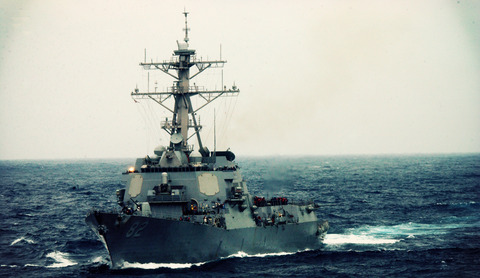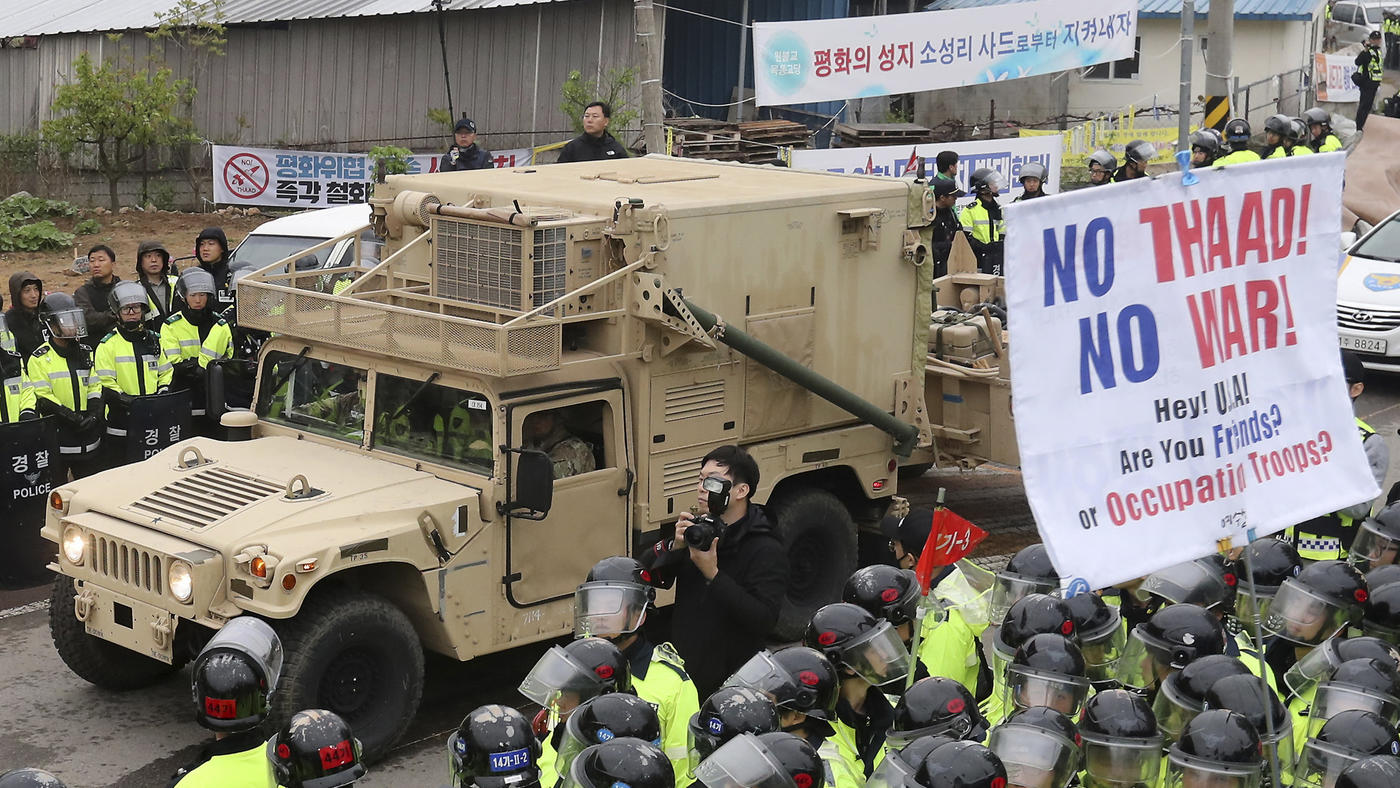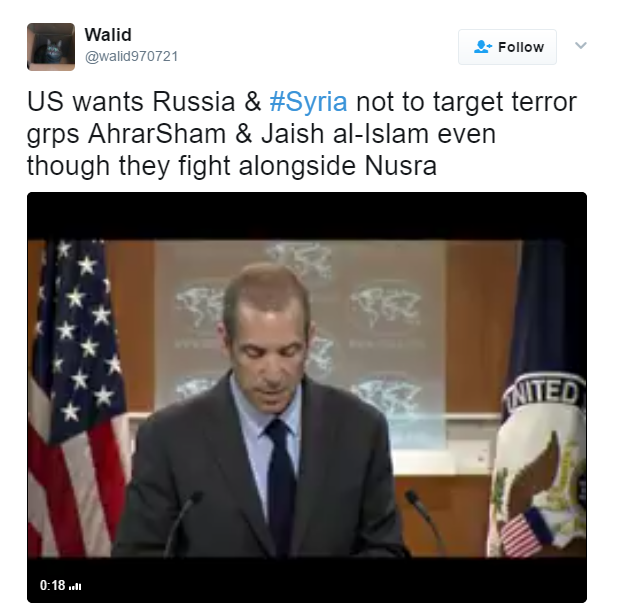“Throughout the history of mankind there have been murderers and tyrants; and while it may seem momentarily that they have the upper hand, they have always fallen.” (Mahatma Gandhi)
“The United States has discarded pretensions to international legality and decency, and embarked on a course of raw imperialism run amok.” (William Rockler, Nuremberg Tribunal prosecutor)
Except for fools and madmen, everyone knows that nuclear war would be an unprecedented human catastrophe. …
In a 2-megaton explosion over a fairly large city, buildings would be vaporized, people reduced to atoms and shadows, outlying structures blown down like matchsticks and raging fires ignited. And if the bomb were exploded on the ground, an enormous crater, like those that can be seen through a telescope on the surface of the Moon, would be all that remained where midtown once had been.” (Carl Sagan, Nuclear Winter, 1983)
 “Today there is an imminent risk of war with the use of that kind of weapon and I don’t harbor the least doubt that an attack by the United States and Israel against the Islamic Republic of Iran would inevitably evolve towards a global nuclear conflict.
“Today there is an imminent risk of war with the use of that kind of weapon and I don’t harbor the least doubt that an attack by the United States and Israel against the Islamic Republic of Iran would inevitably evolve towards a global nuclear conflict.
In a nuclear war the “collateral damage” would be the life of all humanity. Let us have the courage to proclaim that all nuclear or conventional weapons, everything that is used to make war, must disappear!” (Fidel Castro Ruz, Conversations with Michel Chossudovsky, October 12-15, 2010)
 I do not know with what weapons World War III will be fought, but World War IV will be fought with sticks and stones”. (Albert Einstein)
I do not know with what weapons World War III will be fought, but World War IV will be fought with sticks and stones”. (Albert Einstein)
When a US sponsored nuclear war becomes an “instrument of peace”, condoned and accepted by the World’s institutions and the highest authority including the United Nations, there is no turning back: human society has indelibly been precipitated headlong onto the path of self-destruction.
The anti-war movement is dead, nuclear war is not front page news.
What are the countervailing forces which might prevent this war from occurring? There are numerous ongoing forces at work within the US State apparatus, the US Congress, the Pentagon and NATO which are confronting the Trump administration.
The main force which could prevent this war from occurring comes from the base of society, requiring forceful antiwar action by hundreds of millions of people across the land, nationally and internationally.
People must mobilize not only against this diabolical military agenda, the authority of the State and its officials must also be challenged.
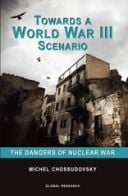 This war can be prevented if people forcefully confront their governments, pressure their elected representatives, organize at the local level in towns, villages and municipalities, spread the word, inform their fellow citizens regarding the implications of a nuclear war, initiate debate and discussion within the armed forces.
This war can be prevented if people forcefully confront their governments, pressure their elected representatives, organize at the local level in towns, villages and municipalities, spread the word, inform their fellow citizens regarding the implications of a nuclear war, initiate debate and discussion within the armed forces.
Click cover image to order Towards a World War III Scenario, the Dangers of Nuclear War
The holding of mass demonstrations and antiwar protests is not enough. What is required is the development of a broad and well organized grassroots antiwar network which challenges the structures of power and authority.
What is required is a mass movement of people which forcefully challenges the legitimacy of war, a global people’s movement which criminalizes war.
The following text was first published in November 2010. An expanded version was published in 2011 in my book entitled “Towards a World War III Scenario, The Dangers of Nuclear War”
Michel Chossudovsky, May Day 2017
* * *
Antiwar protest does not question the legitimacy of those to whom the protest is addressed.
Protest is accepted under Western style “democracy”, precisely because it accepts the established political order, while exerting pressure on political leaders to shift their policy stance.
Protest serves the interests of the war criminals in high office, to whom the demands are directed.
Ultimately what is at stake is the legitimacy of the political and military actors and the economic power structures, which control the formulation and direction of US foreign policy.
What is needed is to consistently challenge the legitimacy of the main political and military actors, reveal the true face of the American Empire and the underlying criminalisation of foreign policy. Ultimately what is required is to question the Obama Administration’s “right to rule”.
Even if a majority of the population is against the war, this in itself will not prevent the war from occurring.
The propaganda campaign’s objective is to sustain the lies which support the legitimacy of the main political and military actors
While the Obama administration implements a “war on terrorism”, the evidence (including mountains of official documents) amply confirms that successive U.S. administrations have supported, abetted and harbored international terrorism including Al Qaeda and Osama bin Laden.
This fact, in itself, must be suppressed because if it ever trickles down to the broader public, the legitimacy of the so-called “war on terrorism” collapses “like a deck of cards.” And in the process, the legitimacy of the main actors behind this system would be threatened.
How does one effectively break the war and police state agendas?
Essentially by refuting the “war on terrorism” and America’s holy crusade against Islamic fundamentalism which constitute the very foundations of America’s national security doctrine.
In other words, the mobilization of antiwar sentiment in itself will not reverse the tide of war.
A necessary condition for bringing down the rulers is to question their legitimacy and eventually dismantle their propaganda campaign.
How best to achieve this objective? By fully uncovering the lies behind the “war on terrorism” and revealing the complicity of the US administration in the events of 9/11.
This is a big hoax, it’s the biggest lie in US history. The war pretext does not stick and the rulers should be removed.
Moreover, it is important to show that “Enemy Number One” (Osama bin Laden) is fabricated.

Bin Laden & Brzezinski, Afghanistan
The terrorist attacks are indeed real, but who is behind them? The covert operations in support of terrorist organisations, including the history of Al Qaeda’s links to the CIA since the Soviet Afghan war are known and documented. They must be fully revealed. These covert operations relate directly to the wave of terrorist attacks which have occurred since September 11, most of which are said to have been ordered by Al Qaeda.
To reverse the tide, the spreading of information at all levels, which counteracts the propaganda campaign is required.
The truth undermines and overshadows the lie.
Once the “real truth” becomes fully understood, the legitimacy of the rulers will be undermined.
When the lies – including those concerning September 11 – are fully revealed and understood by everybody, the legitimacy of the US NATO Israel military agenda will be broken.
While this will not necessarily result in a fundamental and significant “regime change” in the US, a new “anti-war consensus” will have emerged, which may eventually pave the way for a broader struggle against the New World Order and the American Empire’s quest for global domination.
A war agenda is not disarmed through antiwar sentiment or through protest. Protest accepts the legitimacy of the leaders to whom the protests are being addressed.
One does not reverse the tide by asking President Barack Obama [update: Donald Trump]: “please abide by the Geneva Convention” and the Nuremberg Charter. Ultimately, a consistent antiwar agenda requires unseating the war criminals in high office as a first step towards disarming the institutions and corporate structures of the New World Order.
To break the Inquisition, we must also break its propaganda, its fear and intimidation campaign, which galvanizes public opinion into accepting the “war on terrorism”.
The Existing Anti-War movement
The existing antiwar movement has since 2003 been substantially weakened and divided. It does not at present have the required organizational capabilities to wage this campaign.
The antiwar movement is misinformed on the nature of the US military agenda. Several non-governmental organizations have placed the blame on Iran, for not complying with the “reasonable demands” of the “international community”. These same organizations, which are committed to World Peace tend to downplay the implications of the proposed US bombing of Iran.
An important segment of the antiwar movement, including prominent “progressive” intellectuals, are tacitly supportive of the “war on terrorism”. Al Qaeda is considered a threat. “We are against the war but we support the campaign against terrorism”.
The 9/11 Truth Movement which challenges US military doctrine and the pretext for waging war is categorized by segments of the anti-war movement as “Conspiracy Theorists”.
While we should build upon existing antiwar structures, a meaningful mass movement would require entirely different premises and strategies.
Manufacturing dissent
The antiwar collectives in the US, Canada and Western Europe are composed of numerous trade unions, NGOs, community groups, etc, many of which are dependent on foundation and/or government funding.
The programs of these NGOs and people’s movements rely heavily on both public as well as private funding agencies including the Ford, Rockefeller, McCarthy foundations, among others. While the anti-globalization and antiwar movements are opposed to Wall Street, the Big Five Defense Contractors (ie. weapons producers) and the Texas oil giants controlled by Rockefeller, et al., the foundations and charities of Rockefeller et al will generously fund progressive anti-capitalist anti-war networks as well as environmentalists (opposed to Big Oil) with a view to ultimately overseeing and shaping their various activities.
These mechanisms of “manufacturing dissent” require a manipulative environment, a process of arm-twisting and subtle cooptation of individuals within progressive organizations, including anti-war coalitions.
Whereas the mainstream media “manufactures consent”, the complex network of NGOs (including segments of the alternative media) are used by the corporate elites to mould and manipulate the protest movement. In the US, the main antiwar coalitions including United For Peace and Justice and MoveOn are funded by the corporate establishment.
Similarly, part of the “Left Leaning” alternative media, which has accepted the official 9/11 narrative, tends to pay lip service to the US led war. (See Michel Chossudovsky, “Manufacturing Dissent”: the Anti-globalization Movement is Funded by the Corporate Elites, Global Research, September 2010)
At this juncture, “progressives” funded by major foundations are an obstacle to the formation of an articulate grassroots antiwar movement.
A consistent antiwar movement must also confront various forms of cooption within its ranks, the fact that a significant sector of progressive opinion tacitly supports US foreign policy including “humanitarian interventions” under UN/NATO auspices.
An antiwar movement funded by major corporate foundations is the cause rather than the solution. A coherent antiwar movement cannot be funded by warmongers.
Jus ad Bellum: 9/11 and the Invasion of Yugoslavia and Afghanistan
Both the wars of Yugoslavia and Afghanistan were upheld by several “Progressives” as “Just Wars”. In the case of Afghanistan, the “self-defense” argument was accepted at face value as a legitimate response to the 9/11 attacks, without examining the fact that the US administration had not only supported the “Islamic terror network”, it was also instrumental in the installation of the Taliban government in 1995-96.
In 2001, when Afghanistan was bombed and later invaded, several “Progressives” upheld the Administration’s “just cause” military doctrine.
In the wake of 9/11, the antiwar movement against the illegal invasion of Afghanistan was isolated. The trade unions, civil society organizations had swallowed the media lies and government propaganda. They had accepted a war of retribution against Afghanistan, which allegedly was harboring Al Qaeda. Several prominent “left leaning” intellectuals upheld the “war on terrorism” agenda.
Media disinformation prevailed. People were misled as to the nature and objectives underlying the invasion of Afghanistan. Osama bin Laden and the Taliban were identified as the prime suspects of the 9/11 attacks, without a shred of evidence and without addressing the historical relationship between Al Qaeda and the US intelligence apparatus. In this regard, understanding 9/11 is crucial in formulating a consistent antiwar position.
9/11 is the pillar of US war propaganda, it sustains the illusion of an outside enemy, it justifies pre-emptive military intervention.
A meaningful anti-war movement requires breaking the “war on terrorism” narrative and upholding 9/11 Truth.
To reverse the tide of war and globalization requires a massive campaign of networking and outreach to inform people across the land, nationally and internationally, in neighborhoods, workplaces, parishes, schools, universities, municipalities, on the dangers of a US sponsored war, which contemplates the use of nuclear weapons. The message should be loud and clear: Iran [or North Korea] is not the threat. Even without the use of nukes, the proposed aerial bombardments could result in escalation, ultimately leading us into a broader war in the Middle East.
Debate and discussion must also take place within the Military and Intelligence community, particularly with regard to the use of tactical nuclear weapons, within the corridors of the US Congress, in municipalities and at all levels of government. Ultimately, the legitimacy of the political and military actors in high office must be challenged.
The corporate media also bears a heavy responsibility for the cover-up of US sponsored war crimes. It must also be forcefully challenged for its biased coverage of the Middle East war.
For the past year, Washington has been waging a “diplomatic arm twisting” exercise with a view to enlisting countries into supporting of its military agenda. It is essential that at the diplomatic level, countries in the Middle East, Asia, Africa and Latin America take a firm stance against the US military agenda.
Both Hillary Clinton and her predecessor at the State Department Condoleezza Rice have trekked across the Middle East, “expressing concern over Iran’s nuclear program”, seeking the unequivocal endorsement of the governments of the region against Tehran. Meanwhile both the Bush and Obama administrations have allocated funds in support of Iranian dissident groups both within Iran and the US.
Fake Anti-war Activism: Heralding Iran as a Nuclear Threat
Many people in the antiwar movement, while condemning the US administration, also condemn the government of President Ahmadinejad for its bellicose stance with regard to Israel. The Jus ad Bellum reasoning used as a pretext to bomb Yugoslavia on humanitarian grounds is now being applied to Iran.
President Ahmadinejad allegedly wants Israel to be “wiped off the Map” as first reported by the New York Times in October 2005:
“Iran’s conservative new president, Mahmoud Ahmadinejad, said Wednesday that Israel must be “wiped off the map” and that attacks by Palestinians would destroy it, the ISNA press agency reported.
Ahmadinejad was speaking to an audience of about 4,000 students at a program called “The World Without Zionism,” …. His tone was reminiscent of that of the early days of Iran’s Islamic revolution in 1979. Iran and Israel have been bitter enemies since then, and anti-Israel slogans have been common at rallies.”(See Nazila Fathi, Wipe Israel ‘off the map’ Iranian says – The New York Times, 27 October 2005)
The alleged “Wiped Off the Map” statement by Iran’s president was never made. The rumor was fabricated by the American media with a view to discrediting Iran’s head of state and providing a justification for waging an all out war on Iran:
On October 25th, 2005 …. the newly elected Iranian President Mahmoud Ahmadinejad delivered a speech at a program, titled “The World Without Zionism”….
Before we get to the infamous remark, it’s important to note that the “quote” in question was itself a quote— they are the words of the late Ayatollah Khomeini, the father of the Islamic Revolution. Although he quoted Khomeini to affirm his own position on Zionism, the actual words belong to Khomeini and not Ahmadinejad. Thus, Ahmadinejad has essentially been credited (or blamed) for a quote that is not only unoriginal, but represents a viewpoint already in place well before he ever took office.
THE ACTUAL QUOTE:
So what did Ahmadinejad actually say? To quote his exact words in farsi:
“Imam ghoft een rezhim-e ishghalgar-e qods bayad az safheh-ye ruzgar mahv shavad.”
That passage will mean nothing to most people, but one word might ring a bell: rezhim-e. It is the word “Regime”, pronounced just like the English word with an extra “eh” sound at the end. Ahmadinejad did not refer to Israel the country or Israel the land mass, but the Israeli regime. This is a vastly significant distinction, as one cannot wipe a regime off the map. Ahmadinejad does not even refer to Israel by name, he instead uses the specific phrase “rezhim-e ishghalgar-e qods” (regime occupying Jerusalem).
So this raises the question.. what exactly did he want “wiped from the map”? The answer is: nothing. That’s because the word “map” was never used. The Persian word for map, “nagsheh”, is not contained anywhere in his original farsi quote, or, for that matter, anywhere in his entire speech. Nor was the western phrase “wipe out” ever said. Yet we are led to believe that Iran’s President threatened to “wipe Israel off the map”, despite never having uttered the words “map”, “wipe out” or even “Israel”.
THE PROOF:
The full quote translated directly to English:
“The Imam said this regime occupying Jerusalem must vanish from the page of time”.
Word by word translation:
Imam (Khomeini) ghoft (said) een (this) rezhim-e (regime) ishghalgar-e (occupying) qods (Jerusalem) bayad (must) az safheh-ye ruzgar (from page of time) mahv shavad (vanish from).
Here is the full transcript of the speech in farsi, archived on Ahmadinejad’s web site:
www.president.ir/farsi/ahmadinejad/speeches/1384/aban-84/840804sahyonizm.htm”
(See the detailed article by Arash Norouzi, Israel: “Wiped off The Map”. The Rumor of the Century, Fabricated by the US Media to Justify An All out War on Iran , Global Research February 20, 2007)
What President Ahmadinjad was essentially calling for in his statement was “regime change” in Tel Aviv. (Compare Ahmadinejad’s bland statement on regime change in Israel with that of former Deputy Defense Secretary Paul Wolfowitz, who called for “Ending states that sponsor terrorism”.
This alleged “Wiped off the Map” statement has served not only to justify a pre-emptive attack against Iran but also to subdue and tame the antiwar movement.
While the danger of an all out war on Iran is a matter of concern, it is by no means a priority for the US, Canadian and European antiwar movements. In the US, there are very few antiwar events focussing on US-Israeli threats directed against Iran (See Main US antiwar collective: United for Peace & Justice : Index, United for Peace & Justice : Events).
On the other hand, there is an ongoing campaign led by United Against Nuclear Iran” (UANI), calling on President Obama and the US Congress to prevent Iran from developing nuclear weapons. (See UANI home page). The UANI collective, founded by Obama appointees Richard Holbrooke and Gary Samore, claims to be integrated by “human rights and humanitarian groups, the labor movement, political advocacy and grassroots organizations” (Coalition | UANI)
UANI’s advisory board consists of a number of U.S. government insiders and big shots who have close ties with the U.S. statesmen including R. James Woolsey, the former head of CIA,… By publishing propagandistic reports and articles on the purported hazard of Iran’s nuclear activities, UANI also functions as a mouthpiece which is exclusively dedicated to fear-mongering and spreading falsehood about Iran. (See Spreading falsehoods about Iran: “United Against Nuclear Iran”: America’s war propaganda mouthpiece” Orwell’s Dreams, September 20, 2010)
Notwithstanding Arash Norouzi’s disproval, many in the antiwar movement, while condemning the US, continue to believe that Iran constitutes a threat and that the solution is “regime change”. The funding of NGOs (which are constituent members of major antiwar collectives) by tax exempt charities and corporate foundations, has also contributed to weakening antiwar activism in relation to Iran. Iran is viewed by many within the antiwar movement as a potential aggressor. Its non-existent nuclear weapons are considered, a threat to global security.
The Road Ahead
What is required is the development of a broad based grassroots network which seeks to disable patterns of authority and decision making pertaining to war.
This network would be established at all levels in society, towns and villages, work places, parishes. Trade unions, farmers organizations, professional associations, business associations, student unions, veterans associations, church groups would be called upon to integrate the antiwar organizational structure. Of crucial importance, this movement should extend into the Armed Forces as a means to breaking the legitimacy of war among service men and women.
The first task would be to disable war propaganda through an effective campaign against media disinformation. The corporate media would be directly challenged, leading to boycotts of major news outlets, which are responsible for channelling disinformation into the news chain. This endeavor would require a parallel process at the grass roots level, of sensitizing and educating fellow citizens on the nature of the war and the global crisis, as well as effectively “spreading the word” through advanced networking, through alternative media outlets on the internet, etc.
The creation of such a movement, which forcefully challenges the legitimacy of the structures of political authority, is no easy task. It would require a degree of solidarity, unity and commitment unparalleled in World history. It would require breaking down political and ideological barriers within society and acting with a single voice. It would also require eventually unseating the war criminals, and indicting them for war crimes.
Abandon the Battlefield: Refuse to Fight
The military oath taken at the time of induction demands unbending support and allegiance to the US Constitution, while also demanding that US troops obey orders from their President and Commander in Chief:
“I,____________, do solemnly swear (or affirm) that I will support and defend the Constitution of the United States against all enemies, foreign and domestic; that I will bear true faith and allegiance to the same; and that I will obey the orders of the President of the United States and the orders of the officers appointed over me, according to the regulations and the Uniform Code of Military Justice. So help me God”
The President and Commander in Chief has blatantly violated all tenets of domestic and international law. So that making an oath to “obey orders from the President” is tantamount to violating rather than defending the US Constitution.
“The Uniform Code of Military Justice (UCMJ) 809.ART.90 (20), makes it clear that military personnel need to obey the “lawful command of his superior officer,” 891.ART.91 (2), the “lawful order of a warrant officer”, 892.ART.92 (1) the “lawful general order”, 892.ART.92 (2) “lawful order”. In each case, military personnel have an obligation and a duty to only obey Lawful orders and indeed have an obligation to disobey Unlawful orders, including orders by the president that do not comply with the UCMJ. The moral and legal obligation is to the U.S. Constitution and not to those who would issue unlawful orders, especially if those orders are in direct violation of the Constitution and the UCMJ.” (Lawrence Mosqueda, An Advisory to US Troops A Duty to Disobey All Unlawful Orders,
http://www.globalresearch.ca/articles/MOS303A.html,
See also Michel Chossudovsky, “We the People Refuse to Fight”: Abandon the Battlefield!<> March 18, 2006 )
The Commander in Chief is a war criminal. According to Principle 6 of the Nuremberg Charter:
“The fact that a person [e.g. Coalition troops] acted pursuant to order of his Government or of a superior does not relieve him from responsibility under international law, provided a moral choice was in fact possible to him.”
Let us make that “moral choice” possible, to enlisted American, British, Canadian and Coalition servicemen and women.
Disobey unlawful orders! Abandon the battlefield! … Refuse to fight in a war which blatantly violates international law and the US Constitution!
But this is not a choice which enlisted men and women can make individually.
It is a collective and societal choice, which requires an organizational structure.
Across the land in the US, Britain, Canada and in all coalition countries, the anti-war movement must assist enlisted men and women to make that moral choice possible, to abandon the battlefield in Iraq and Afghanistan. [and now in Syria and Yemen]
This will not be an easy task. Committees at local levels must be set up across the United States, Canada, Britain, Italy, Japan and other countries, which have troops in Iraq and Afghanistan.
We call upon veterans’ associations and local communities to support this process.
This movement needs to dismantle the disinformation campaign. It must effectively reverse the indoctrination of coalition troops, who are led to believe that they are fighting “a just war”: “a war against terrorists”.
The legitimacy of the US military authority must be broken.
What has to be achieved:
- Reveal the criminal nature of this military project,
- Break once and for all the lies and falsehoods which sustain the “political consensus” in favor of a pre-emptive nuclear war.
- Undermine war propaganda, reveal the media lies, reverse the tide of disinformation, wage a consistent campaign against the corporate media
- Break the legitimacy of the war-mongers in high office.
- Dismantle the US sponsored military adventure and its corporate sponsors.
- Bring Home the Troops
- Repeal the illusion that the State is committed to protecting its citizens.
- Expose the “fake crises” such as the global flu pandemic as a means to distract public opinion from the dangers of a global war.
- Uphold 9/11 Truth. Reveal the falsehoods behind 9/11 which are used to justify the Middle East Central Asian war under the banner of the “Global War on Terrorism” (GWOT)
- Expose how a profit driven war serves the vested interests of the banks, the defense contractors, the oil giants, the media giants and the biotech conglomerates
- Challenge the corporate media which deliberately obfuscates the causes and consequences of this war,
- Reveal and take cognizance of the unspoken and tragic outcome of a war waged with nuclear weapons.
- Call for the Dismantling of NATO
- Implement the prosecution of war criminals in high office
- Close down the weapons assembly plants and implement the foreclosure of major weapons producers
- Close down all US military bases in the US and around the World
- Develop an antiwar movement within the Armed Forces and establish bridges between the Armed Forces and the civilian antiwar movement
- Forcefully pressure governments of both NATO and non-NATO countries to withdraw from the US led global military agenda.
- Develop a consistent antiwar movement in Israel. Inform the citizens of Israel of the likely consequences of a US-NATO-Israeli attack on Iran.
- Confront Target the pro-war lobby groups including the pro-Israeli groups in the US
- Dismantle the homeland security state, call for the repeal of the PATRIOT legislation
- Call for the removal of the military from civilian law enforcement. Call for the enforcement of the Posse Comitatus Act
- Call for the demilitarization of outer space and the repeal of Star Wars
People across the land, nationally and internationally, must mobilize against this diabolical military agenda, the authority of the State and its officials must be forcefully challenged.
This war can be prevented if people forcefully confront their governments, pressure their elected representatives, organize at the local level in towns, villages and municipalities, spread the word, inform their fellow citizens on the implications of a nuclear war, initiate debate and discussion within the armed forces.
What is required is the development of a broad and well organized grassroots antiwar network which challenges the structures of power and authority, the nature of the economic system, the vast amounts of money used to fund the war, the shear size of the so-called defense industry.
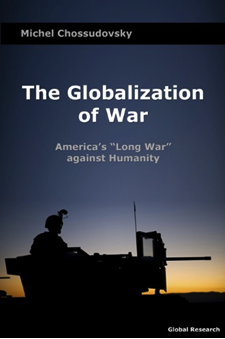
Click book cover to order Michel Chossudovsky’s latest book directly from Global Research
What is required is a mass movement of people which forcefully challenges the legitimacy of war, a global people’s movement which criminalizes war.
What is needed is to break the conspiracy of silence, expose the media lies and distortions, confront the criminal nature of the US Administration and of those governments which support it, its war agenda as well as its so-called “Homeland Security agenda” which has already defined the contours of a police State.
The World is at the crossroads of the most serious crisis in modern history. The US has embarked on a military adventure, “a long war”, which threatens the future of humanity.
It is essential to bring the US war project to the forefront of political debate, particularly in North America and Western Europe. Political and military leaders who are opposed to the war must take a firm stance, from within their respective institutions. Citizens must take a stance individually and collectively against war.
We call upon people across the land, in North America, Western Europe, Israel, The Arab World, Turkey and around the world to rise up against this military project, against their governments which are supportive of military action against Iran, against the media which serves to camouflage the devastating implications of a war against Iran.
The military agenda supports a profit driven destructive global economic system which impoverishes large sectors of the world population.
This war is sheer madness.
World War III is terminal. Albert Einstein understood the perils of nuclear war and the extinction of life on earth, which has already started with the radioactive contamination resulting from depleted uranium. “I know not with what weapons World War III will be fought, but World War IV will be fought with sticks and stones.”
The media, the intellectuals, the scientists and the politicians, in chorus, obfuscate the untold truth, namely that war using nuclear warheads destroys humanity, and that this complex process of gradual destruction has already commenced.
When the lie becomes the truth there is no turning backwards.
When war is upheld as a humanitarian endeavor, Justice and the entire international legal system are turned upside down: pacifism and the antiwar movement are criminalized. Opposing the war becomes a criminal act.
The Lie must be exposed for what it is and what it does.
It sanctions the indiscriminate killing of men, women and children.
It destroys families and people. It destroys the commitment of people towards their fellow human beings.
It prevents people from expressing their solidarity for those who suffer. It upholds war and the police state as the sole avenue.
It destroys both nationalism and internationalism.
Breaking the lie means breaking a criminal project of global destruction, in which the quest for profit is the overriding force.
This profit driven military agenda destroys human values and transforms people into unconscious zombies.
Let us reverse the tide.
Challenge the war criminals in high office and the powerful corporate lobby groups which support them.
Break the American inquisition.
Undermine the US-NATO-Israel military crusade.
Close down the weapons factories and the military bases.
Bring home the troops.
Members of the armed forces should disobey orders and refuse to participate in a criminal war.








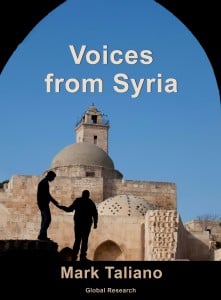








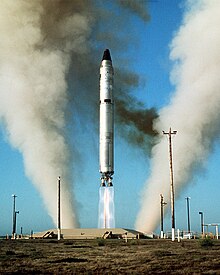
 North Korea test-fired a ballistic missile on April 29, the day after U.S. Secretary of State Rex Tillerson convened a special session of the U.N. Security Council, calling for new economic sanctions on North Korea and other “painful” measures over its nuclear weapons program.
North Korea test-fired a ballistic missile on April 29, the day after U.S. Secretary of State Rex Tillerson convened a special session of the U.N. Security Council, calling for new economic sanctions on North Korea and other “painful” measures over its nuclear weapons program.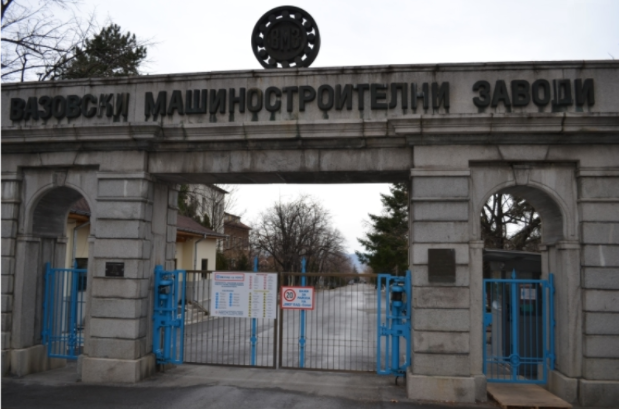




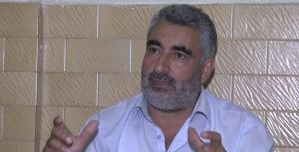

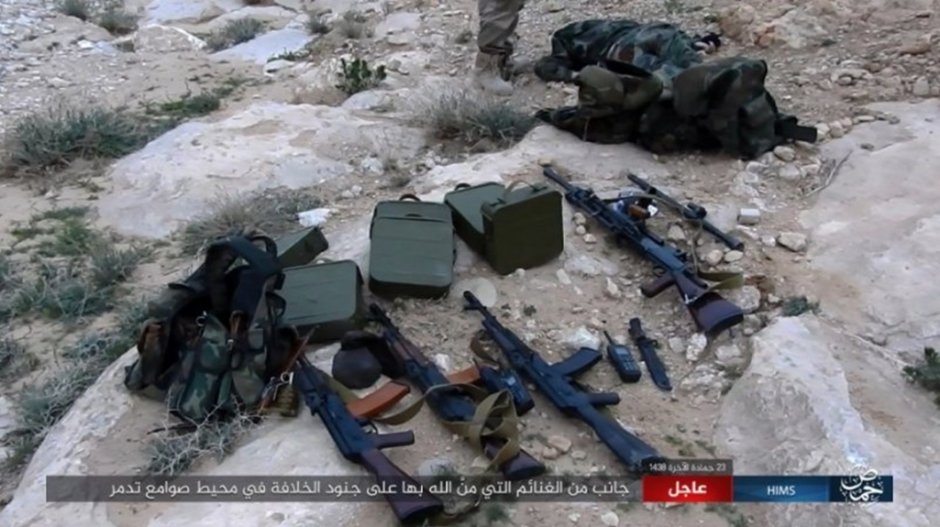



 This retiree organization was born out of the campaign to halt these monumental cuts handed down on behalf of the financial institutions and multi-national corporations who are responsible for the impoverishment of Detroit. DAREA has appealed the rulings by former Federal Judge Steven Rhodes who presided over the bankruptcy proceedings in 2013-4 through the Sixth Circuit and it is now before the U.S. Supreme Court.
This retiree organization was born out of the campaign to halt these monumental cuts handed down on behalf of the financial institutions and multi-national corporations who are responsible for the impoverishment of Detroit. DAREA has appealed the rulings by former Federal Judge Steven Rhodes who presided over the bankruptcy proceedings in 2013-4 through the Sixth Circuit and it is now before the U.S. Supreme Court.

 With substantial institutional support from governments and several international agencies, |4| microcredit institutions have gradually mushroomed in developing countries. Globally, around 2 billion adults do not have a bank account. This is extremely propitious for the growth of microcredit agencies. By 2014, there were 1,045 microcredit agencies with 112 million clients, 81% of whom were women, and a credit portfolio of $87 billion. 57% of these borrowers live in rural areas. These figures for 2014 are taken from the
With substantial institutional support from governments and several international agencies, |4| microcredit institutions have gradually mushroomed in developing countries. Globally, around 2 billion adults do not have a bank account. This is extremely propitious for the growth of microcredit agencies. By 2014, there were 1,045 microcredit agencies with 112 million clients, 81% of whom were women, and a credit portfolio of $87 billion. 57% of these borrowers live in rural areas. These figures for 2014 are taken from the 









 In India, over the last 20 years, more than 300,000 suicides of indebted peasants have been recorded. The number of victims is not subsiding. |
In India, over the last 20 years, more than 300,000 suicides of indebted peasants have been recorded. The number of victims is not subsiding. |




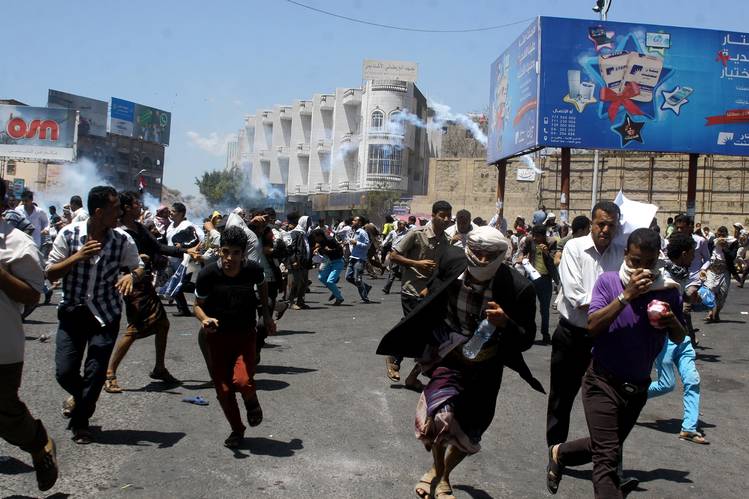
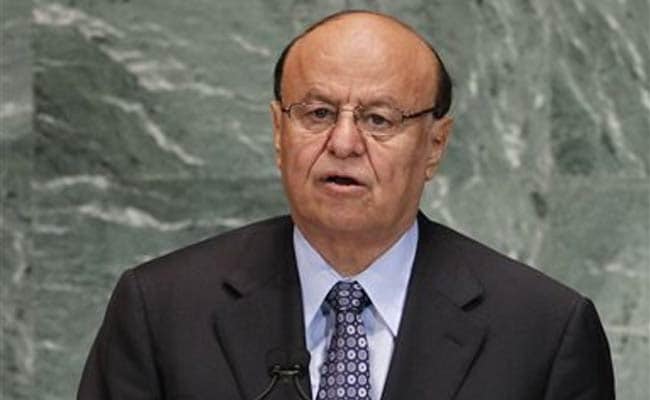






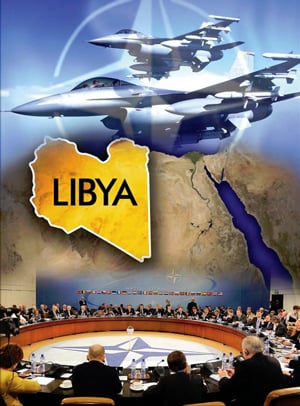
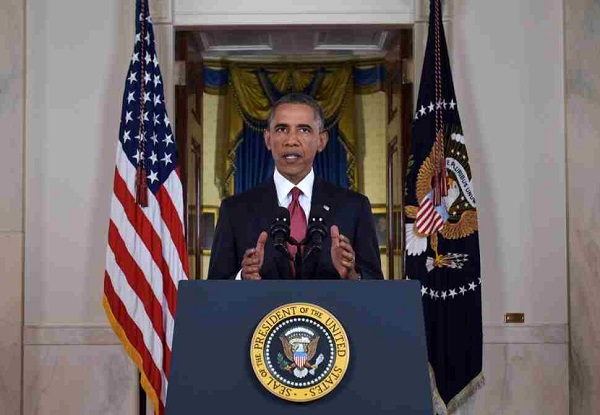



 The problem is that the public is brainwashed to imagine that it is the banks that need saving, not the indebted economy. Keen proposes a “Modern Debt Jubilee” that is essentially a swap of equity for debt. The intellectual pedigree for this policy to keep debt within the ability to pay was laid two centuries ago by Saint-Simon in France. His solution was for banks to take an equity position in their clients, so that payments to backers could rise or fall in keeping with the fortunes of the enterprise. Keen urges that this become the basis for future banking.
The problem is that the public is brainwashed to imagine that it is the banks that need saving, not the indebted economy. Keen proposes a “Modern Debt Jubilee” that is essentially a swap of equity for debt. The intellectual pedigree for this policy to keep debt within the ability to pay was laid two centuries ago by Saint-Simon in France. His solution was for banks to take an equity position in their clients, so that payments to backers could rise or fall in keeping with the fortunes of the enterprise. Keen urges that this become the basis for future banking.

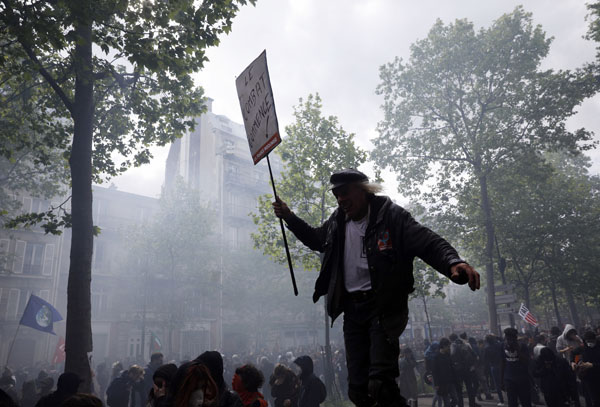
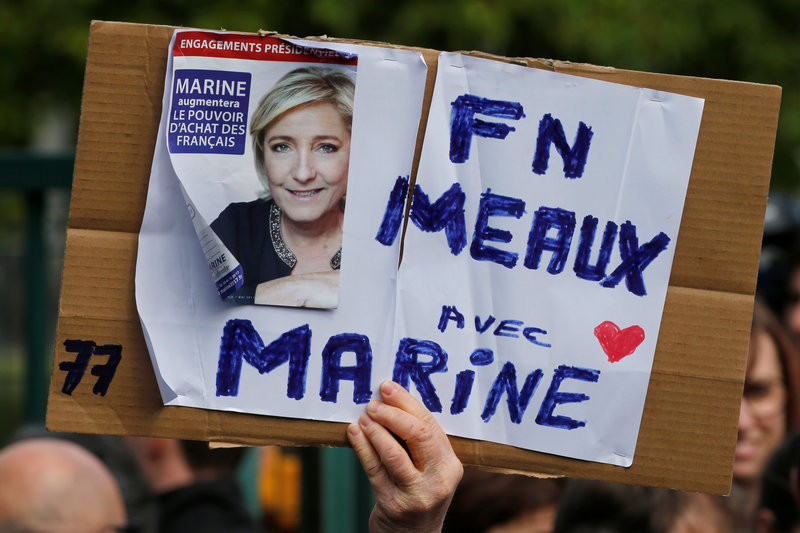 The FO trade union, one quarter of whose members voted for Marine Le Pen in the first round according to one recent poll, did not specify whom it was endorsing.
The FO trade union, one quarter of whose members voted for Marine Le Pen in the first round according to one recent poll, did not specify whom it was endorsing.



 What America’s aristocrats, the individuals who control the U.S.-headquartered international corporations, are more concerned about than anything else, is dominating the world. This motivation is consistent with the empirical findings in
What America’s aristocrats, the individuals who control the U.S.-headquartered international corporations, are more concerned about than anything else, is dominating the world. This motivation is consistent with the empirical findings in 



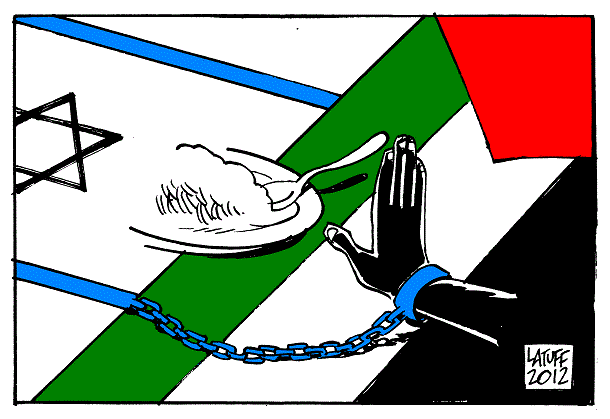




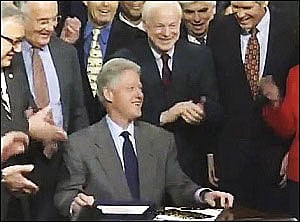











 Trident II missiles typically carry from four to five warheads, but can expand that up to eight. While the missile is capable of hosting as many as 12 warheads, that configuration would violate current nuclear treaties. U.S. submarines currently deploy about 890 warheads, of which 506 are W76s and 384 are W88s.
Trident II missiles typically carry from four to five warheads, but can expand that up to eight. While the missile is capable of hosting as many as 12 warheads, that configuration would violate current nuclear treaties. U.S. submarines currently deploy about 890 warheads, of which 506 are W76s and 384 are W88s.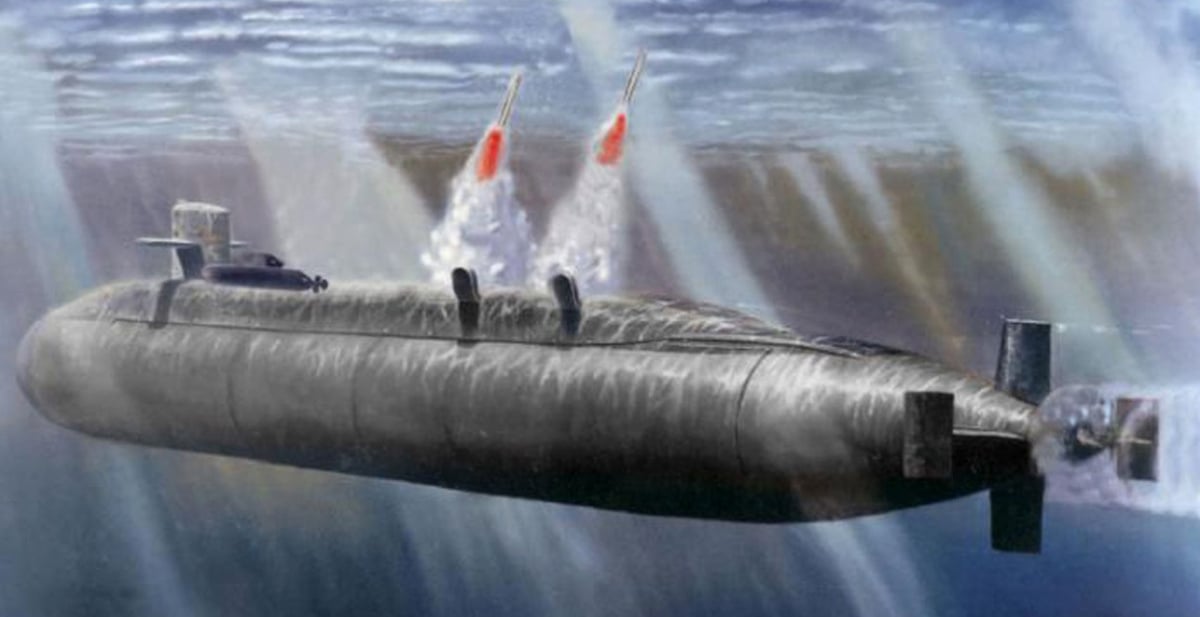
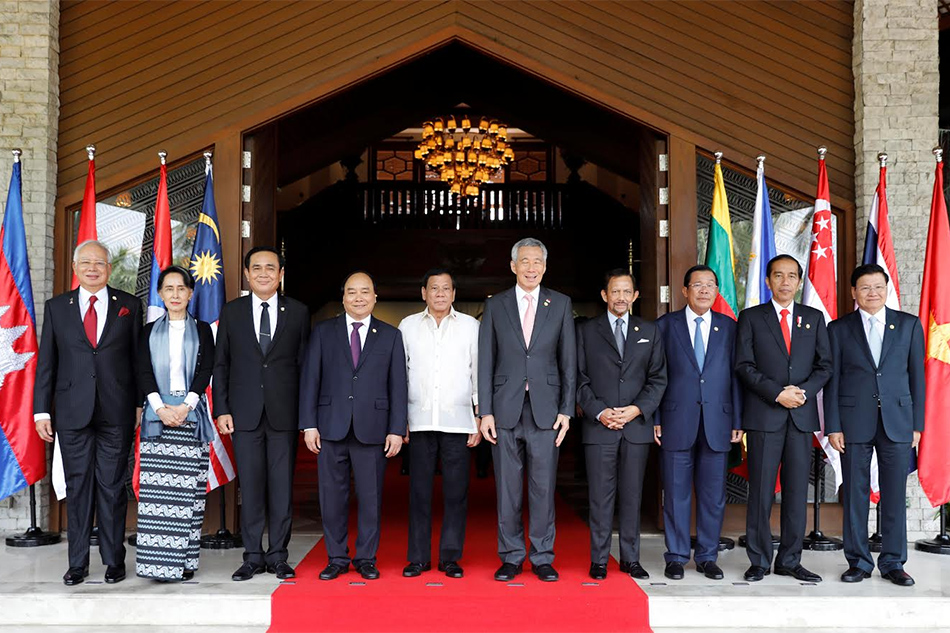






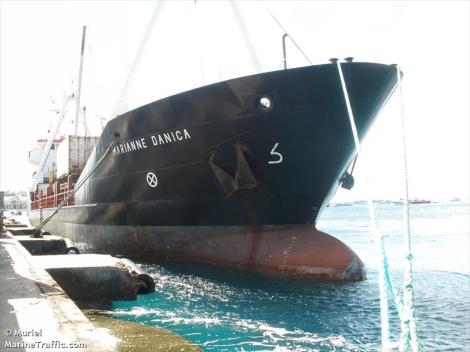 The fact that the United States carries on large-scale shipments of Bulgarian weapons to the “moderate” opposition in Syria has recently been uncovered by the Bulgarian newspaper
The fact that the United States carries on large-scale shipments of Bulgarian weapons to the “moderate” opposition in Syria has recently been uncovered by the Bulgarian newspaper 
